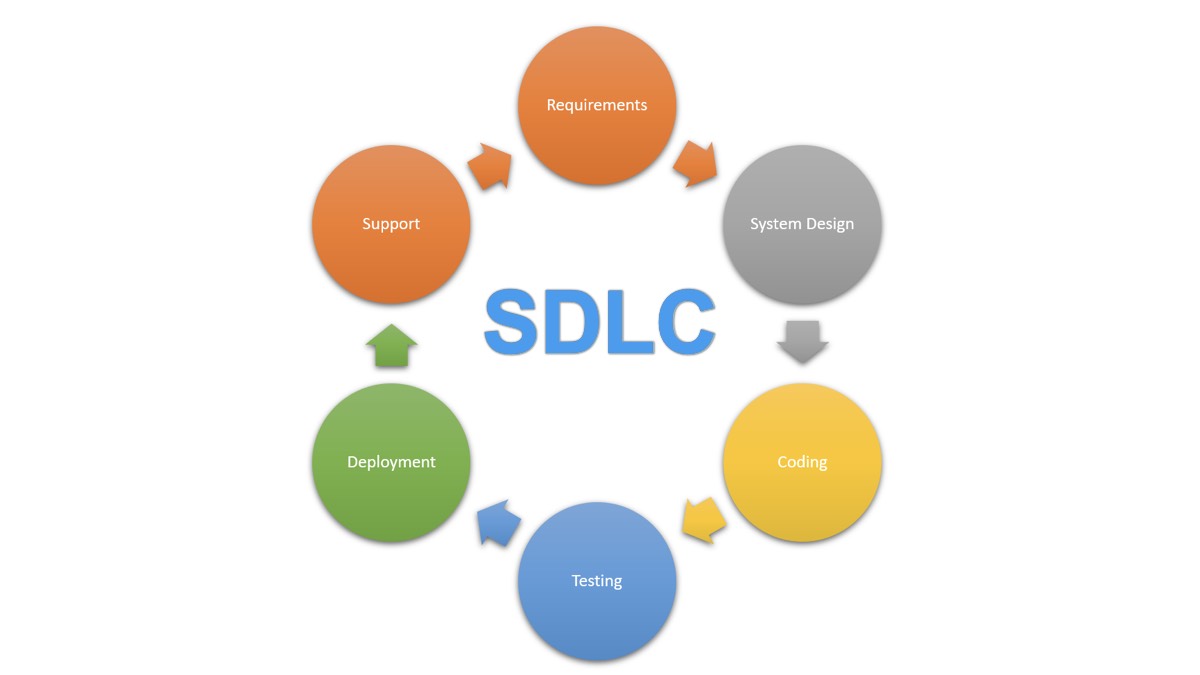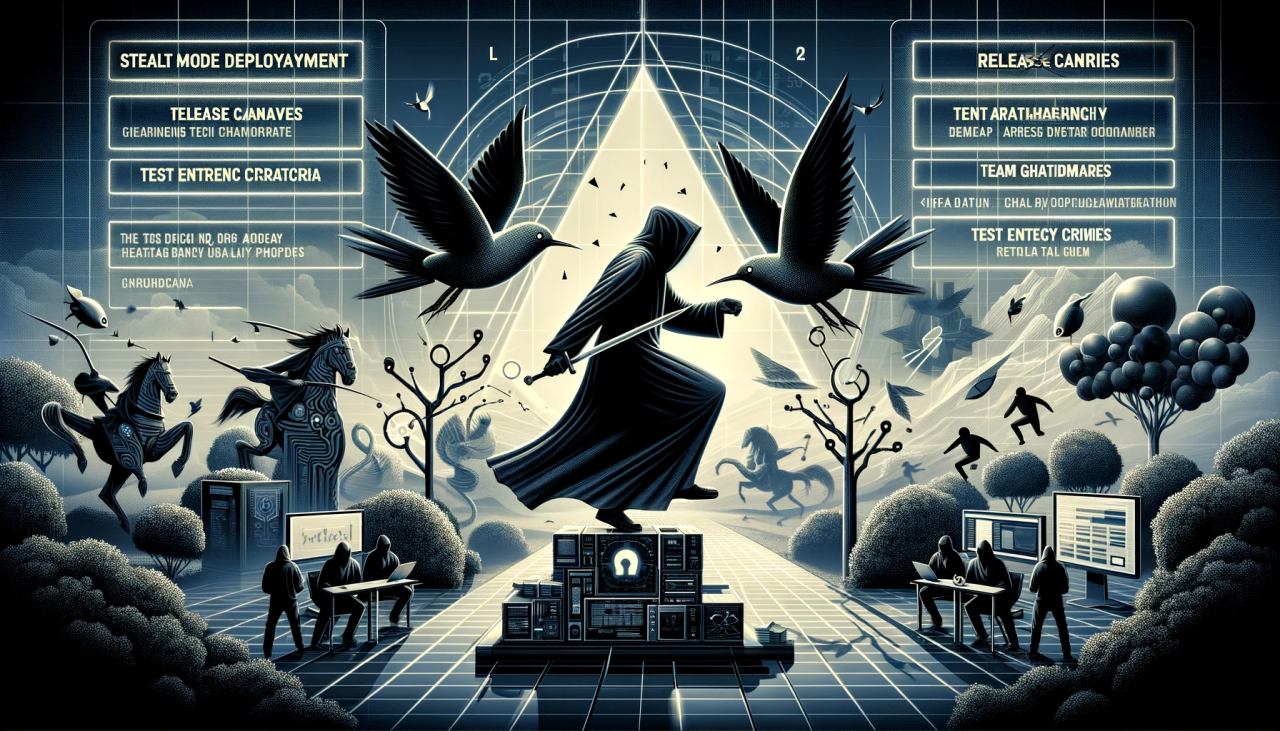
Quality Assurance Image Library
This is my carefully curated collection of Slack images, designed to perfectly capture those unique QA moments. Whether it's celebrating a successful test run, expressing the frustration of debugging, or simply adding humor to your team's chat, these images are here to help you communicate with personality and style.
The more you test something...

In the realm of Quality Assurance (QA), there lies a fundamental truth encapsulated by the quote, "The more you test something, the more you'll find something." This statement is more than just a cautionary tale; it's a principle that guides the relentless pursuit of excellence and reliability in software development. As a seasoned QA professional with a decade of experience under my belt, I've seen firsthand how this principle plays out in real-world testing scenarios. In this week's blog, we'll dive deep into the implications of this quote, exploring its significance and how it shapes our approach to QA.
Uncovering the Layers
At its core, the quote speaks to the iterative nature of testing. With each test cycle, we peel away layers, uncovering not just bugs but also insights into the software's behavior under various conditions. This process is not merely about finding faults; it's about understanding the product more deeply. The complexity of modern software systems means that no matter how comprehensive the initial tests are, subsequent testing is almost guaranteed to reveal something new.
The Paradox of Testing
There's an inherent paradox in QA that this quote subtly highlights: the goal of achieving a bug-free product is both the driving force and the unreachable star of software testing. Each bug found and fixed brings us closer to this ideal, yet the very act of testing uncovers more areas to explore, more scenarios to consider, and potentially, more bugs to fix. This is not a discouragement but a recognition of the dynamic nature of software and its interaction with an ever-changing world.
Quality as a Continuous Journey
This quote underscores the philosophy that quality is not a destination but a continuous journey. In the landscape of QA, complacency is the enemy. The belief that a product is free of defects after a round of testing is a fallacy. Instead, we must adopt a mindset of continuous improvement, where each testing cycle is an opportunity to learn, adapt, and enhance the software.
Strategic Depth in Testing
Understanding that more testing leads to more discoveries, we must strategize our testing efforts to maximize efficiency and effectiveness. This means prioritizing test cases based on risk, employing automated testing for repetitive tasks, and leveraging exploratory testing to uncover the unknown. It's about smart testing, not just more testing. By focusing on critical areas and incorporating feedback loops, we ensure that our testing efforts are both deep and broad, covering as much ground as possible.
Embracing the Discoveries
Finally, this quote invites us to embrace the discoveries made during testing with a positive mindset. Each finding, whether it's a bug, a usability issue, or a performance bottleneck, is an opportunity to improve. It's a testament to the thoroughness of our testing efforts and our commitment to quality. These discoveries should be celebrated as milestones on the road to excellence, not merely seen as obstacles.
Conclusion
"The more you test something, the more you'll find something" is not just a statement about the inevitability of finding bugs; it's a call to action for QA professionals. It challenges us to dig deeper, to look closer, and to never settle for "good enough." As we continue to navigate the complex and ever-evolving landscape of software development, let this principle guide us in our unending quest for quality. Let us embrace the iterative nature of testing, the strategic depth of our efforts, and the positive impact of our discoveries. After all, in the world of QA, every bug found is a step closer to a better product.
Software Development Lifecycle
As a seasoned Quality Assurance (QA) professional, I've witnessed the evolution of software development practices over the years. The SDLC (Software Development Lifecycle) remains at the core of successful software projects, guiding teams through planning, development, testing, deployment, and maintenance. In this week's QA blog, let's delve into the essential phases of the SDLC, explore various methodologies, and discuss how QA practices fit seamlessly into a hybrid model.

What is the SDLC?
The SDLC is a structured process that enables development teams to build high-quality software efficiently. It encompasses several phases, each with specific activities and deliverables:
- Requirements Gathering and Analysis:
- Business analysts collaborate with stakeholders to define and document software requirements.
- QA's role: QA professionals actively participate in requirement reviews, ensuring clarity, completeness, and measurability. We validate that requirements align with quality standards and compliance.
- System Design:
- Software architects translate requirements into a high-level design.
- QA's role: QA experts review design documents, focusing on testability, scalability, and security aspects. We identify potential risks and suggest improvements.
- Coding:
- Developers write code based on the system design.
- QA's role: QA engineers can contribute by reviewing code quality, adherence to coding standards, and identifying potential defects early.
- Testing:
- The software undergoes rigorous testing to uncover bugs and ensure it meets requirements.
- QA's role: QA testers design test cases, execute functional, regression, and performance tests. We collaborate closely with developers to address issues promptly.
- Deployment:
- The software is released to the production environment.
- QA's role: QA participates in smoke testing, ensuring the deployment process is smooth. We verify that the software functions correctly in the live environment.
- Maintenance and Support:
- Ongoing activities include user training, monitoring performance, and fixing defects.
- QA's role: We continue to validate enhancements, monitor performance metrics, and address any post-deployment issues.
SDLC Methodologies
Various SDLC methodologies exist, each with its strengths and weaknesses. Let's explore a few:
- Waterfall Model:
- Sequential approach with distinct phases.
- QA's role: QA teams perform comprehensive testing at each stage, ensuring quality gates are met before progressing.
- Agile Model:
- Iterative and incremental development.
- QA's role: QA actively participates in sprint planning, executes tests during each sprint, and provides continuous feedback.
- Spiral Model:
- Combines iterative development with risk analysis.
- QA's role: QA assesses risks, validates prototypes, and ensures risk mitigation strategies are effective.
- Hybrid Model:
- A pragmatic blend of waterfall and agile approaches.
- QA's role: In the hybrid model, QA practices adapt to the specific phase. During the initial requirements and design phase, QA focuses on risk analysis and validation. As the project transitions to agile sprints, QA actively participates in testing and deployment.
QA Practices in a Hybrid Model
In a hybrid model, QA professionals play a pivotal role:
- Requirements Phase:
- QA ensures that requirements are clear, testable, and aligned with quality standards.
- Risk analysis helps prioritize testing efforts.
- Design Phase:
- QA reviews design documents, emphasizing testability and security.
- Early identification of potential issues prevents rework.
- Agile Sprints:
- QA participates in sprint planning, executes functional and regression tests, and collaborates with developers.
- Continuous feedback ensures quality throughout.
- Deployment and Maintenance:
- QA verifies successful deployment and monitors post-release performance.
- Ongoing testing maintains software quality.
Conclusion
The SDLC, combined with the right methodology, empowers development teams to create exceptional software. In a hybrid model, QA practices adapt dynamically, ensuring quality remains at the forefront. As QA professionals, our ability to navigate these phases and methodologies contributes significantly to successful software delivery.
Why You Shouldn't Use Excel as a Test Case Repository

In the world of software testing, the organization and management of test cases are critical to ensuring the quality and reliability of software products. While Microsoft Excel has long been a go-to tool for various data management tasks, including some aspects of Quality Assurance (QA) processes, it's far from the ideal solution for managing test cases. With a decade of experience in QA, I've seen firsthand the pitfalls of relying on Excel as a Test Case Repository. Here are the top five reasons why you should reconsider using Excel for this crucial aspect of software testing.
1. Lack of Real-Time Collaboration
In today's fast-paced and often remote working environments, real-time collaboration is key. Excel, especially when used as a standalone file without integration into cloud services like Office 365, severely limits the ability of teams to work together in real-time. This can lead to issues such as version conflicts, overwritten data, and a general bottleneck in the testing process, as team members cannot simultaneously view or edit the test cases effectively.
2. Scalability Issues
As projects grow, so do their testing requirements. Excel is not designed to efficiently handle large datasets or complex relationships between data. Test case repositories can quickly become unwieldy in Excel, with thousands of rows and numerous columns becoming difficult to navigate, update, and maintain. This can lead to decreased productivity and an increased risk of errors.
3. Inadequate Reporting and Analytics
Effective testing requires robust reporting and analytics capabilities to track test progress, coverage, and outcomes. Excel's capabilities in this area are limited, requiring manual setup and updates to reports. It lacks the dynamic reporting features found in dedicated test management tools, which can automatically generate detailed reports and analytics, providing insights into the testing process and helping to identify areas of concern quickly.
4. Risk of Data Loss and Corruption
Excel files are prone to corruption, especially as file sizes increase or when shared across multiple users. There's also a significant risk of data loss, whether from accidental deletion or the lack of a robust version control system. Unlike specialized test case management tools that offer detailed audit trails and data backup mechanisms, Excel leaves your critical testing data vulnerable.
5. No Integration with Other Testing Tools
Modern QA processes often involve a suite of testing tools, including issue tracking systems, automation tools, and continuous integration/continuous deployment (CI/CD) pipelines. Excel lacks the ability to integrate natively with these tools, making it challenging to establish a seamless testing workflow. This lack of integration can lead to inefficiencies and errors as data must be manually transferred between systems, increasing the workload on QA teams and the potential for mistakes.
Conclusion
While Excel might seem like a convenient and familiar tool for managing test cases, its limitations become apparent as testing requirements grow in complexity and scale. The lack of real-time collaboration, scalability issues, inadequate reporting, risk of data loss, and lack of integration with other testing tools make Excel a suboptimal choice for managing test cases. Investing in a dedicated test case management tool can significantly enhance the efficiency, reliability, and effectiveness of your QA processes, leading to higher quality software and happier teams. As we move forward in the ever-evolving landscape of software development, it's crucial to utilize tools that are specifically designed for the challenges and needs of modern QA practices.
Heuristics in QA

Welcome back to our weekly QA blog, where we delve into the intriguing world of quality assurance and software testing. This week, we're exploring the concept of heuristics, a term that's become increasingly relevant in our field.
Understanding Heuristics
In the realm of software testing, heuristics are often described as "fallible methods of solving a problem or making a decision." This definition, coined by esteemed QA experts Cem Kaner and James Bach, highlights the inherent uncertainty and flexibility within heuristics.
Karen Johnson further elucidates this concept, defining heuristics as "experience-based techniques for problem solving, learning, and discovery." In the often unpredictable and complex landscape of software testing, heuristics act as our compass, guiding us through uncharted territories where traditional methods might falter.
Why Heuristics Matter in QA
Practicality Over Perfection: Software testing often involves vast and intricate systems where an exhaustive check is impractical, if not impossible. Heuristics allow testers to use their judgment, experience, and intuition to identify potential problem areas, prioritize testing efforts, and find satisfactory solutions more efficiently.
Adaptability: Heuristics are not rigid rules but adaptable guidelines that can be tweaked based on the context of the project. This adaptability is crucial in a field where no two projects are exactly the same.
Fostering Innovation: By encouraging testers to rely on their insights and experiences, heuristics foster a more creative and investigative approach to testing, often leading to the discovery of unconventional bugs or issues.
Examples of Heuristics in Software Testing
- Error Guessing: This involves anticipating where errors might occur based on past experiences or common failure patterns.
- Boundary Value Analysis: A heuristic technique where tests are designed around the boundaries of input ranges, where errors are more likely to occur.
- Risk-Based Testing: Prioritizing testing efforts based on the risk and impact of potential failures.
Applying Heuristics: A Real-World Approach
- Start with the Known: Leverage your past experiences and knowledge about similar projects or systems to guide your initial testing efforts.
- Embrace Exploration: Allow yourself the freedom to explore the software without strict boundaries. Sometimes the most insightful discoveries are made serendipitously.
- Collaborate and Learn: Share insights and experiences with your team. Heuristics thrive in environments where knowledge and ideas are freely exchanged.
- Iterate and Adapt: Be prepared to change your approach as you gather more information about the system under test.
The Balance Between Heuristics and Structured Testing
While heuristics play a critical role in QA, they should complement, not replace, structured testing methodologies. A balanced approach, where structured tests provide coverage and heuristics guide exploratory efforts, often yields the best results.

Conclusion
Heuristics are a testament to the art and science of software testing. They remind us that, in our quest for quality, our experience, intuition, and judgment are as valuable as our technical skills. As we continue to navigate the evolving landscapes of software projects, let us embrace heuristics as tools for learning, discovery, and problem-solving.
Stay tuned for more insights and discussions in our upcoming blogs. Happy testing!
No Such Thing As Free Lunch in QA

As the saying goes, "there's no such thing as a free lunch". This statement is especially true in the world of software quality assurance testing. Software testing is a crucial component of the software development process, ensuring that the final product meets the desired quality standards and user expectations. However, there are costs associated with software testing that cannot be ignored, and attempts to cut corners in this area can lead to significant problems down the road.
One of the most significant costs of software testing is time. Thorough testing takes time, and rushing the testing process to save time can result in missed bugs and defects. These defects can have severe consequences, such as security vulnerabilities or loss of data. Fixing these problems can cost far more time and money than the time saved by rushing the testing process.
Another cost associated with software testing is resources. To ensure thorough testing, you need the right people with the right skills, tools, and resources to do the job. Attempting to cut corners by using unskilled or inexperienced testers, inadequate tools or insufficient resources can lead to unreliable testing results and missed defects.
In addition to the direct costs of software testing, there are also indirect costs to consider. These include the costs of rework, delays in release schedules, and damage to reputation. If a product is released with known defects or quality issues, it can negatively impact the reputation of the company and its products, leading to lost business and revenue.
Therefore, it's essential to remember that there is no such thing as a free lunch when it comes to software testing. Attempting to cut corners and save costs in this area can lead to significant problems down the road. Instead, it's crucial to invest in the right resources, people, and tools for quality assurance testing to ensure the product meets the desired quality standards and user expectations.
In conclusion, software quality assurance testing is a critical component of the software development process. Cutting corners in this area to save time or money is a risky strategy that can lead to significant problems down the road. It's essential to invest in the right resources, people, and tools for software testing to ensure the final product meets the desired quality standards and user expectations. Remember, there's no such thing as a free lunch, and attempting to take shortcuts in software testing can be costly in the long run.
Winter Rules Are In Effect
Just like in golf, where winter rules adapt the game to colder, more challenging conditions, the world of Software Quality Assurance (QA) often requires its own set of "winter rules" to navigate the complex landscape of testing during the colder months. Let's tee off and explore some essential tips and strategies to keep in mind for QA this winter.

1. Embrace AI and Machine Learning: Your Caddies in the Snow With the landscape of software development continually evolving, AI and machine learning have become crucial allies, much like a caddy in a snow-covered golf course. They assist in automating test case generation and optimizing test coverage, ensuring that your QA process doesn't freeze over in the winter chill. Like a caddy predicting a tricky terrain, AI algorithms can predict potential defects, making your testing process more efficient.
2. Continuous Testing: Keeping the Game Moving Just as a golfer wouldn't stop after a single hole, continuous testing ensures that QA is an ongoing process. With the adoption of DevOps and CI/CD practices, tests are automated throughout the development pipeline. This approach helps to keep the game moving, identifying issues early and reducing the time and cost associated with fixing bugs.
3. Shift-Left Testing: Clearing the Snow Early In golf, it's always best to avoid hazards, and in QA, shift-left testing does just that. By moving testing activities earlier in the development cycle, defects are caught at their source. Think of it as clearing the snow from the fairway early on, ensuring a smoother play throughout.
4. Quantum Computing Testing: New Clubs in the Bag Quantum computing is like a new set of golf clubs – it offers great potential but requires a different approach. The unique challenges of quantum software require innovative testing strategies. This winter, be prepared to add these new "clubs" to your QA "golf bag."
5. IoT and Embedded Systems Testing: Playing on a New Course Testing IoT devices is akin to playing on a new, unfamiliar golf course. It demands understanding the unique challenges of diverse environments and ensuring secure communication, much like adapting to different course layouts and hazards.
6. Data Quality: The Scorecard of Your Game In QA, data quality is your scorecard. It's vital to ensure that the data is accurate, complete, and reliable. This winter, focus on maintaining a clean scorecard by integrating comprehensive data quality checks into your QA process.
7. Mobile Testing: Navigating the Bunkers Mobile app testing is as crucial as navigating the bunkers in golf. It's about ensuring that the apps perform well, are user-friendly, and are secure across various devices – much like a golfer mastering different bunker shots.
8. Cybersecurity: Guarding Against the Unexpected Hazards Cybersecurity in QA is like being prepared for unexpected hazards on a golf course. Regular security testing, including ethical hacking and penetration testing, ensures that your software is fortified against unforeseen risks.
9. Exploratory Testing: The Creative Play Finally, exploratory testing in QA is the equivalent of a creative play in golf. It's about using intuition and experience to explore and identify issues that scripted testing might miss – much like a golfer taking a create shot for the green despite challenging conditions.
Conclusion: Keeping Your Game Sharp in the QA Winter As the winter sets in, it's crucial for QA professionals to adapt their strategies, much like golfers adjust their game to the seasonal changes. By embracing these winter rules – from leveraging AI and ML, engaging in continuous and shift-left testing, to focusing on data quality and cybersecurity – you can ensure that your software testing process remains robust and efficient, even in the frostiest of conditions.
Remember, in the world of software QA, every season brings its own challenges and opportunities. This winter, stay ahead of the game by being adaptable, innovative, and vigilant. Happy testing, and may your metaphorical drives land on the fairway and your code be bug-free!
Setting Productive QA Resolutions for 2024

As we step into 2024, it's essential for Quality Assurance (QA) professionals to set resolutions that not only enhance our skills but also align with the evolving landscape of software testing. With a decade of experience in QA, I've witnessed how automation has revolutionized our field. This year, let's focus on setting resolutions that embrace reliable automation, ensuring our work is more efficient, accurate, and impactful.
Resolution 1: Mastering Advanced Automation Tools
Goal: Expand your toolkit by mastering one or two advanced automation tools.
Why It's Important: Automation tools are constantly evolving. Staying updated with the latest advancements is crucial for maintaining an edge in the QA field.
How to Achieve It: 1. Identify tools that are gaining traction in the industry, such as AI-driven testing frameworks. 2. Allocate regular time slots each week for learning and experimentation. 3. Join webinars, online courses, or workshops to gain practical knowledge.
Resolution 2: Integrating AI and ML in Test Automation
Goal: Incorporate AI and ML algorithms to improve test efficiency and accuracy.
Why It's Important: AI and ML can significantly reduce the time spent on test case maintenance and can identify patterns in data that humans might overlook.
How to Achieve It: 1. Start with basic AI/ML models relevant to testing scenarios. 2. Collaborate with AI experts or take up courses to understand the fundamentals. 3. Implement AI/ML in areas like test case generation, anomaly detection, and predictive analysis.
Resolution 3: Focusing on Test Data Management
Goal: Improve the management and utilization of test data.
Why It's Important: Quality test data is crucial for effective automation. Poorly managed data can lead to inaccurate testing results.
How to Achieve It: 1. Utilize tools for test data generation and management. 2. Regularly update and cleanse your test data repository. 3. Explore data anonymization methods to ensure data privacy.
Resolution 4: Emphasizing on Continuous Testing in DevOps
Goal: Implement or enhance continuous testing practices in the DevOps pipeline.
Why It's Important: Continuous testing ensures that any code changes are immediately tested, reducing the chances of bugs in production.
How to Achieve It: 1. Collaborate with development teams to integrate testing into the CI/CD pipeline. 2. Automate regression and integration tests to run with every build. 3. Monitor test results and feedback for continuous improvement.
Resolution 5: Prioritizing Non-Functional Testing Automation
Goal: Increase the focus on automating non-functional testing like performance, security, and usability testing.
Why It's Important: Non-functional aspects are as critical as functional features for the success of a software application.
How to Achieve It: 1. Identify key non-functional areas relevant to your projects. 2. Use specialized tools for automating tests like load testing, security audits, etc. 3. Incorporate non-functional testing early and regularly in the development cycle.
Conclusion
Setting and following through with these QA resolutions will not only enhance your skill set but also significantly improve the quality and reliability of the software you test. Automation is the key to future-proofing your QA career, and by embracing these resolutions, you're well on your way to a productive and innovative 2024 in the realm of software testing.
Precision Scheduled Railroading
Precision Scheduled Railroading (PSR) is a methodology that revolutionized the railroad industry by streamlining operations, improving efficiency, and reducing waste. Its core principles can be intriguingly applied to the field of Software Quality Assurance (QA) Testing. Here's how we can draw parallels between PSR and QA practices in software development:

Introduction to Precision Scheduled Railroading (PSR)
PSR is a logistics philosophy focused on improving efficiency and resource utilization in railroad operations. It involves strict scheduling, minimizing layovers, and optimizing routes. The goal is to deliver better service with fewer resources and reduced operational complexity.
Applying PSR Principles to Software QA Testing
1. Strict Scheduling in Testing:
- PSR Parallel: Like PSR's rigorous train schedules, QA teams can implement strict testing schedules.
- Application: This involves timely execution of test plans and adhering to release cycles. The goal is to reduce waiting time (idle resources) and ensure timely delivery.
2. Resource Optimization:
- PSR Parallel: PSR minimizes resource wastage by optimizing asset use.
- Application: In QA, this translates to efficient use of testing tools, environments, and personnel. Leveraging automation where appropriate can significantly enhance this aspect.
3. Minimizing Layovers (Downtime):
- PSR Parallel: Reducing idle time for trains.
- Application: In QA, this means minimizing downtime between test cycles and ensuring continuous testing and integration. This approach helps in early identification and resolution of defects.
4. Route Optimization:
- PSR Parallel: Optimizing train routes for maximum efficiency.
- Application: For QA, this involves planning test cases and paths that cover the most critical functionalities with minimal redundancy. It's about finding the most efficient path to cover all test scenarios.
5. Adaptive and Predictive Planning:
- PSR Parallel: PSR requires adaptive planning to respond to dynamic conditions.
- Application: QA teams must adapt their testing strategies based on real-time feedback and predictive analytics to anticipate potential issues.
6. Quality Over Quantity:
- PSR Parallel: Focuses on the quality of rail services rather than the quantity.
- Application: In QA, this emphasizes the importance of thorough, high-quality testing over simply increasing the number of test cases or test executions.
7. Stakeholder Communication and Transparency:
- PSR Parallel: Effective communication is key in PSR for smooth operations.
- Application: Regular updates and transparent communication with stakeholders (developers, project managers, clients) are crucial in QA for ensuring everyone is aligned on the quality goals and outcomes.
Conclusion: A New Paradigm for QA
Adopting PSR principles in Software QA Testing can lead to more efficient, effective, and lean testing processes. This approach encourages QA professionals to think strategically, optimize resources, and focus on delivering the highest quality software in the most efficient manner possible. As the software industry continues to evolve, integrating such innovative methodologies from other industries can provide a competitive edge and lead to superior software products.
Top 5 QA Blog Posts of 2023

As a Quality Assurance professional with a decade of experience in software testing, I've had the privilege of sharing my insights and experiences through our weekly QA blog. This year, we've covered a multitude of topics, each offering unique perspectives and valuable lessons in the realm of software testing. As we close out the year, let's revisit the top 5 blog posts that resonated most with our readers.
1. Stealth Mode Deployment vs Release Canaries: A Strategic Duel
Perhaps the most debated topic of the year, this post explored the contrasting deployment strategies of Stealth Mode and Release Canaries. Stealth Mode Deployment, characterized by its low-key, gradual rollout, offers the advantage of minimal disruption. On the other hand, Release Canaries involve deploying new features to a small, controlled group to gauge reaction and catch issues early. This post was a deep dive into when and how to use each strategy effectively.
2. Test Entrance Criteria: Setting the Stage for Success
This post emphasized the crucial step of establishing clear Test Entrance Criteria before diving into the testing phase. By outlining the necessary conditions, such as environment setup, resource allocation, and documentation completeness, this post guided QA professionals on how to set a solid foundation for successful testing outcomes.
3. QA and Minutemen: Rapid Response in Testing
Drawing an analogy between QA professionals and the historical Minutemen, this entry highlighted the importance of agility and rapid response in software testing. In an era where technology evolves rapidly, the ability to quickly adapt and respond to new challenges is invaluable. This post provided strategies for developing such skills and emphasized the importance of proactive planning.
4. Too Many Cooks in the Kitchen: Navigating Team Dynamics in QA
A favorite among readers, this post tackled the complexities of team dynamics in QA environments. Using the adage "too many cooks spoil the broth," it discussed how too many inputs or conflicting directions can hamper the efficiency and effectiveness of QA processes. The post provided insights on how to manage large teams and ensure cohesive, streamlined testing processes.
5. The Russian Proverb and its Relation to Software Quality Assurance Testing in 2023
This intriguing post drew parallels between a traditional Russian proverb and modern QA practices. It discussed how timeless wisdom applies to contemporary software testing, emphasizing thoroughness, attention to detail, and the importance of not rushing the testing process. This post was a reminder of how cultural insights can enrich our approach to software quality assurance.
As we look forward to 2024, I am excited to continue exploring the ever-evolving landscape of QA and sharing insights that can benefit our community. The world of software testing is dynamic, and there's always more to learn and share. Here's to another year of engaging topics, thoughtful discussions, and excellent quality assurance practices!
Diderot Effect
The Diderot Effect is a phenomenon named after the French philosopher Denis Diderot, who described the impact of a single new possession on the rest of one's belongings. The idea is that acquiring a new item can lead to a chain reaction of purchases as we try to bring everything else up to the same standard. This effect can be observed in many aspects of our lives, including software quality assurance testing.

Software testing is the process of evaluating a system or application to identify defects and ensure that it meets specified requirements. It is an essential part of the software development lifecycle that helps to improve the quality of software products. However, the Diderot Effect can impact the effectiveness of software testing by leading to an over-reliance on tools and techniques that are not always necessary.
For example, a team of software testers may acquire a new testing tool that promises to improve their testing efficiency. However, this new tool may require additional resources to operate effectively, such as training, support, or even more powerful hardware. As a result, the team may start to invest more and more time and resources into the tool, neglecting other important aspects of their testing process.
The Diderot Effect can also lead to a situation where testers become overly reliant on automated testing tools, such as regression testing tools, without considering other testing methods. Automated testing can be very efficient, but it is not always the most appropriate approach. Some types of testing, such as usability testing or exploratory testing, require human input and observation to identify issues that automated tools may miss.
To avoid the negative effects of the Diderot Effect on software quality assurance testing, it is important to focus on the overall testing process and not just individual tools or techniques. A well-designed testing strategy should consider the strengths and weaknesses of each testing method and tool and use them in a complementary way. This approach will ensure that the testing process remains efficient, effective, and flexible, adapting to the changing needs of the software development lifecycle.
In conclusion, the Diderot Effect is a real phenomenon that can impact the quality of software assurance testing. By being aware of its effects and focusing on a holistic approach to software testing, testers can ensure that they are using the most appropriate tools and techniques for their specific needs, without sacrificing other important aspects of the testing process.
About
Welcome to QA!
The purpose of these blog posts is to provide comprehensive insights into Software Quality Assurance testing, addressing everything you ever wanted to know but were afraid to ask.
These posts will cover topics such as the fundamentals of Software Quality Assurance testing, creating test plans, designing test cases, and developing automated tests. Additionally, they will explore best practices for testing and offer tips and tricks to make the process more efficient and effective
Check out all the Blog Posts.
Blog Schedule
| Sunday | Open Topic |
| Monday | Media Monday |
| Tuesday | QA |
| Wednesday | Veed |
| Thursday | Business |
| Friday | Macintosh |
| Saturday | Internet Tools |
Other Posts
- BrowserStack Screenshot
- Canned Responses in Jira
- Copy CSS Selector
- Fix It Right the First Time
- Best QA Blog post of 2022
- Test Case Repository
- Human Testing better than Automation
- Stealth Mode Deployment
- February QA Images
- Intemperance's Eighty Dictum
- Location Guard
- QA Fail: Product Listing on Amazon
- The Reign of Dominic "The Machiavore" Steele
- QA Halloween Testing
- Strong Password Generator